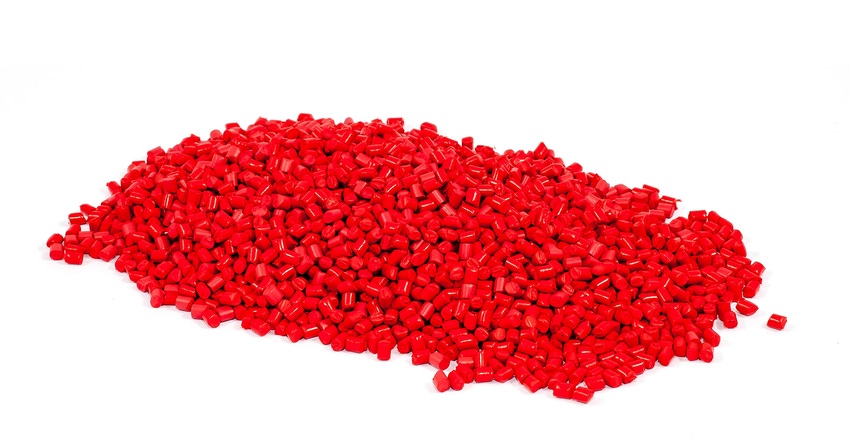Falling monomer costs and additional PE and PP capacity ramping up in North America during Q4 continue to make this a buyer’s market.
October 13, 2022

Pricing took a familiar path, as Prime polyethylene (PE) was stable for a sixth consecutive week and Prime polypropylene (PP) extended losses into its fifth straight month, reports the PlasticsExchange in its Market Update. A clear difference between both resin markets is quite apparent, as producers continue to resist lowball offers from PE buyers seeking bargains while simultaneously discounting PP prices to move material. PE producers have price increases on the table again for October, which is really a protective measure against these final two months of hurricane season and comes amid lower utilization rates.
There are no formal price increases on the table for PP, notes the PlasticsExchange, especially following a heavy build in domestic stockpiles in July and August. PP run rates seem to have been cut hard in September, however, and reactor rates should remain reduced during Q4 as producers aim to re-balance supply and demand.
Meanwhile, falling monomer costs have kept downward pressure on the resin markets, and additional propane dehydrogenation (PDH), PE, and PP capacity is ramping up in North America during Q4. Logistics also are an ongoing issue, with rail congestion, a lack of available cars, and a shortage of ready-to-go trucks still affecting the market.
PE resin trading dominates
PE remained the dominant resin to change hands within the Chicago-based resin clearinghouse’s spot trading platform. Transactions were mostly spread between linear-low-density (LLD) and low-density (LD) PE grades, while high-density (HD) PE saw limited business in a reversal from a week earlier. Pemex reportedly brought its crackers and derivative units back online in Mexico after an ethane pipeline explosion in mid-September.
While benchmark PE prices remained flat the first week of October at the PlasticsExchange, domestic Prime PE railcar offers mostly came in 1 to 2 cents per pound (CPP) higher, while LDPE asking prices were up 2 to 3 CPP, in both the domestic and Houston export markets. At the top end of the pricing spectrum, dealing prices for spot truckloads of prime material came off a penny or so, as suppliers met competitive offers, again trimming the range of transactional pricing within the industry. This was a continuation of the consolidation trend of the past several weeks. Traders were not eager to pay up for their inventory positions, but had no problem at the higher prices if they enabled a back-to-back transaction.
Producers draw down PE resin supplies
Despite flat PE pricing, lower operating rates continue into Q4 as producers keep working down the glut of inventory that has kept spot levels depressed for the past five months. The effort to draw down supply includes a push for additional exports, but similar supply/demand fundamentals in Europe and Asia and the strong US dollar have kept US producers from shipping out as much as they would like, even as freight costs come down. This also comes as the collective push for increases of $0.05 to 0.07/lb remains in place for October, following producers’ unsuccessful attempt to implement a nickel in September, which instead yielded a $0.03/lb decrease. Even with spot pricing stable for more than a month amid lower run rates and a more active hurricane season these past couple of weeks, an increase in October is unlikely unless there is a significant disruption in production.
PP resin trading ticks up
PP trading improved after four slow weeks as a combination of lower prices and procurement for regular production needs coincided. Widespec homo-polymer (Ho) PP was the primary mover in the PlasticsExchange marketplace, while truckload volume in Prime HoPP was healthy; Prime co-polymer (Co) PP sales were scattered in, too. Prime HoPP and CoPP prices dropped 2 and 3 cents, respectively, bringing the spread between these major grades down to a nickel. That remains elevated, but is more in line with traditional spot levels.
Monomer prices continued to slide, largely attributed to reactor rate cuts, limiting the amount of polymer-grade propylene (PGP) needed to process. The decrease in September PGP costs was too mild and caused some processors to push orders into October in anticipation of imminently lower pricing. Aside from the slight increase in demand, market dynamics were similar to the prior week. Supply was heavy and many buyers remained on the sidelines, shooting lowball bids.
While any pickup in demand is notable, this recent week’s increase remains suspect as to whether there is strength at this level or if demand will remain subdued with further monetary tightening likely and higher energy prices roiling the global economy. Despite resin production getting under control, the PP market seems to still have some further downside ahead. With processors and resellers keeping inventories to a minimum, the demand for prompt truckloads remains and they carry a sizable premium. There are also deeper discounts as volume increases, and the sharpest deals are for fresh railcars.
Read the full Market Update, including news about PGP pricing and energy futures, on the PlasticsExchange website.
About the Author(s)
You May Also Like




